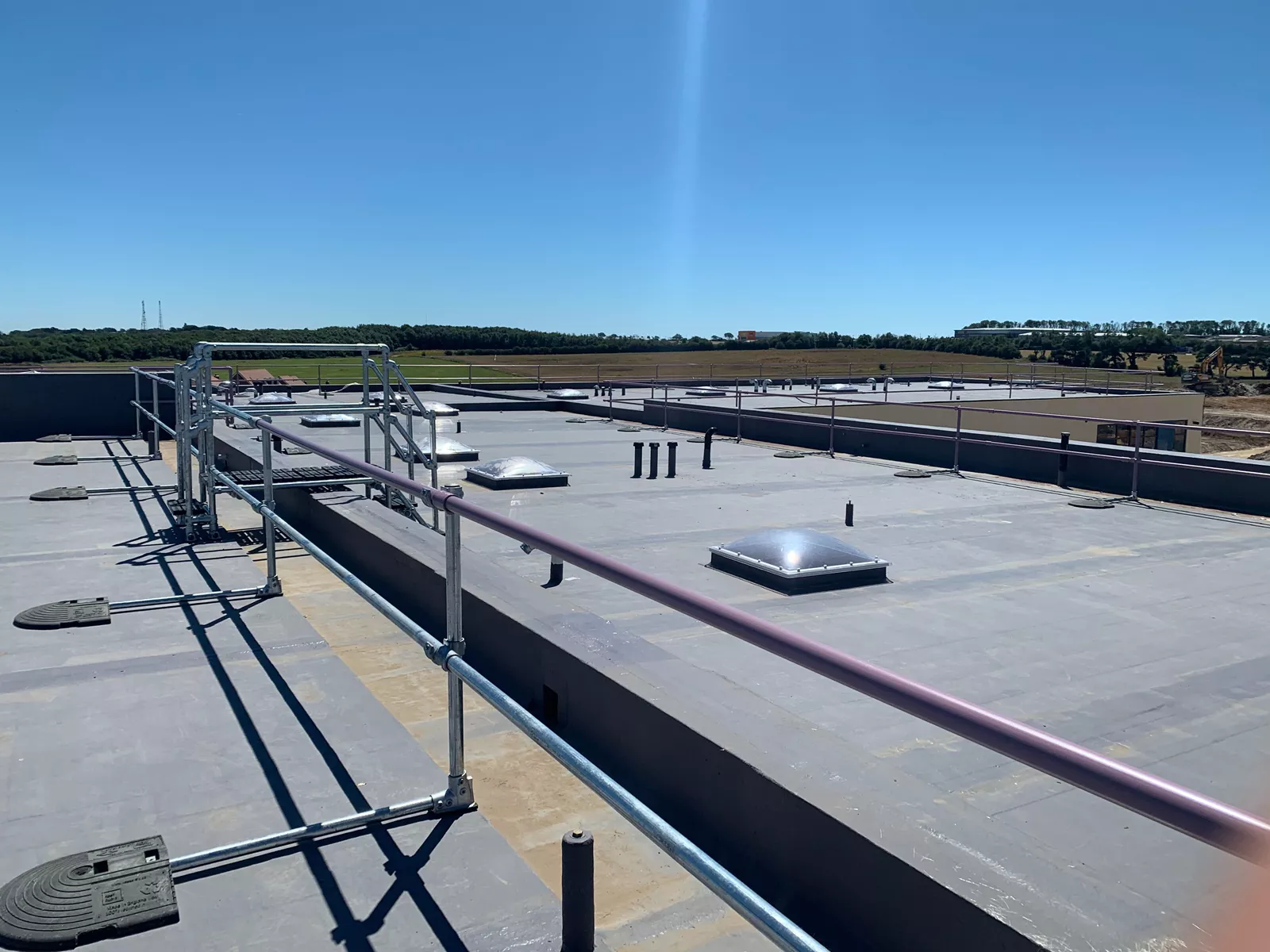
You are visiting the Canada Kee Safety website from United States. Would you like to go to the United States site?
In their satirical book, Dr. Laurence J. Peter and Raymond Hull coined “The Peter Principle,” which says that in a hierarchy, employees tend to rise to their level of incompetence.
However, there is nothing funny about construction and maintenance workers rising to the roof to perform their critical tasks under hazardous conditions. Conversely, there is a hierarchy on the rooftop requiring the utmost competence and expertise. It is known as the Hierarchy of Fall Protection, and it promotes four methods to help ensure safety:
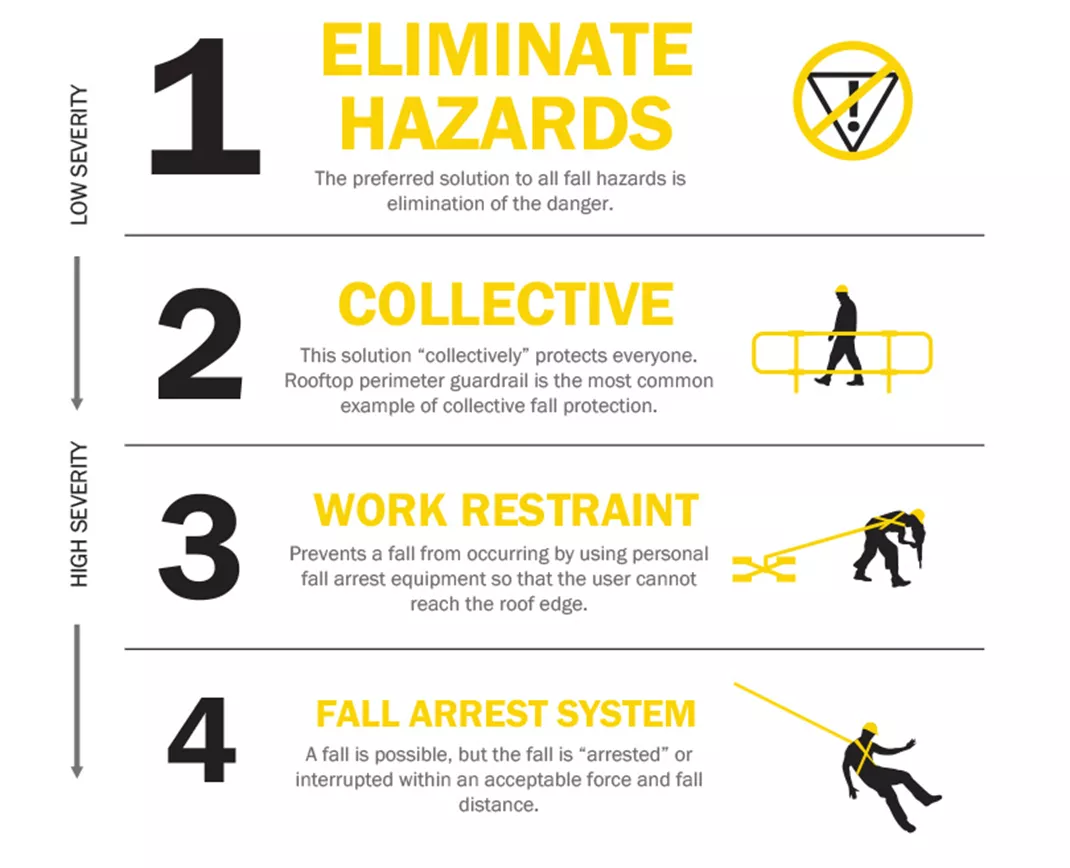
The easiest way to protect workers on the roof is to eliminate the hazards and, therefore, eliminate the need to access the roof. For example, can HVAC or other equipment that needs regular servicing be installed at the ground level?
Such solutions may not always be possible or practical, so it is imperative that access to the roof be restricted to trained, authorized personnel only.
Furthermore, can the workers on the roof be constrained to areas at least 15 feet (4.6 meters) away from the roof edge? Can they be kept away from trip hazards, such as cables, piping, and ductwork?
Sometimes yes, sometimes no. If the hazards cannot be eliminated, take the next step in the hierarchy.
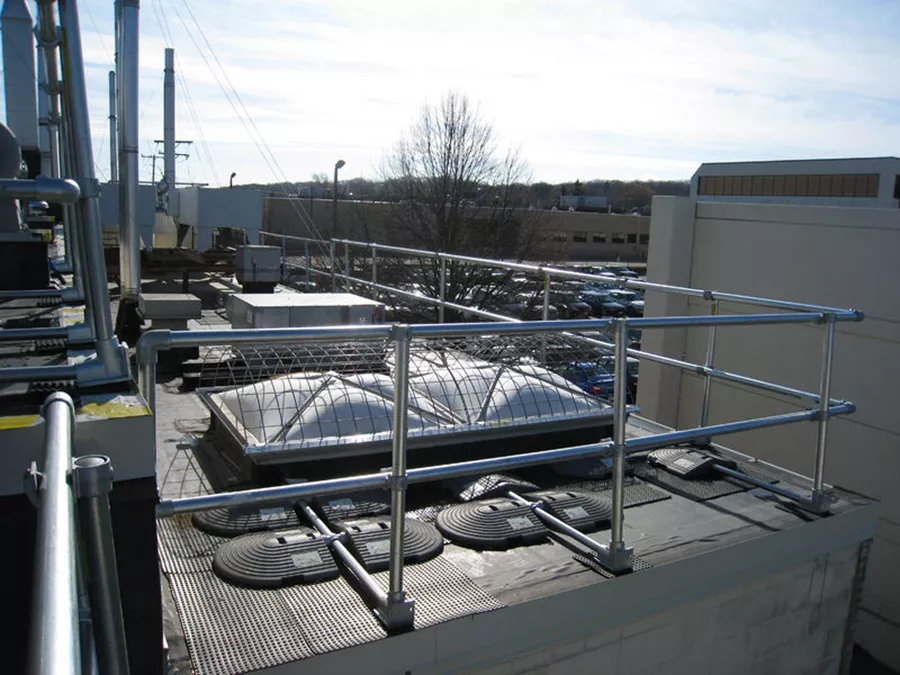
The best method of roof fall protection is a “collective” guardrail system. Collective means that it protects any number of individuals at once. Collective fall protection does not require special training. Several simple collective fall protection systems can be used:

Where collective protection is not in place, such as in confined spaces, on high-sloped roofs, or where the need to access the roof is infrequent, the next step in the hierarchy is work restraint.
Work restraint uses an anchor point, a connecting line and connecting device, and a suitable safety harness to prevent a worker from reaching the roof edge. A horizontal lifeline is an engineered system that can protect up to three workers at once. A vertical lifeline protects one individual and must be inspected before and after every use.
All lifelines require an anchorage system that supports 22.2 kilonewtons (5,000 lbs.) at the tie-off point. A fixed roof anchor can be installed on a wide range of roof types and is attached to the underlying structure. A mobile roof anchor is used on flat and low-slope roofs and does not penetrate the roof membrane. It provides more flexibility for placement on the roof and areas workers can reach.

The last—and least desirable—method in the Hierarchy of Fall Protection is a fall arrest system. If a worker falls over the roof edge, it will “arrest” the fall so that the worker does not reach the ground or drop to a lower level.
Like fall restraint, fall arrest can be a tie-off system with a roof anchor, but it must include a self-retracting lifeline and fall arrest anchor. A safety net can also be used with or without a lifeline, but in all cases of fall arrest, there must also be a rescue plan to minimize trauma and the risk of injury.
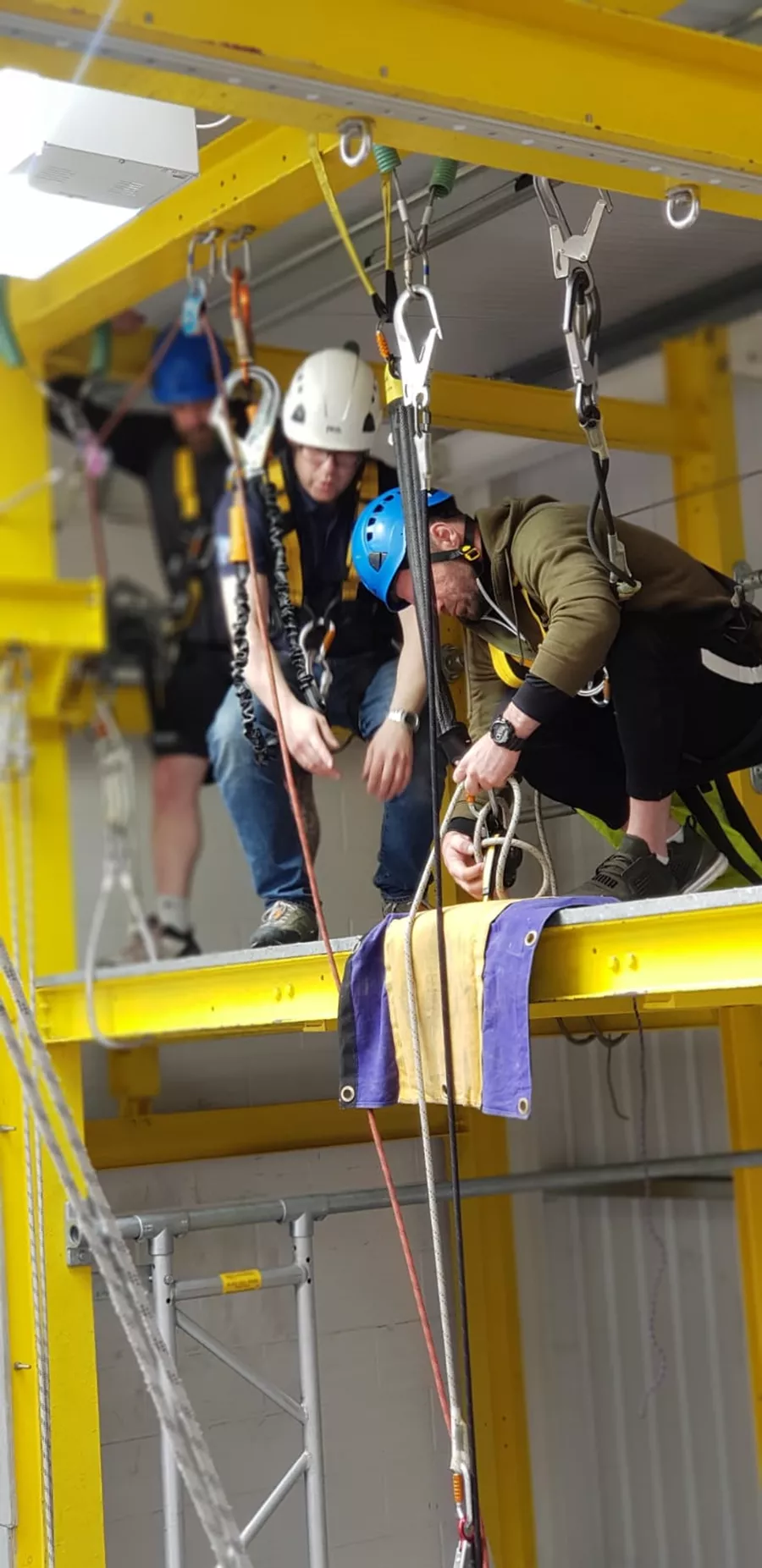
Personal fall protection equipment included in the Hierarchy of Fall Protection—notably lifeline and anchorage systems—is incomplete without proper training. Three critical components include:
Regarding rooftop safety, there is no reason or excuse for anything less than complete competence (and regulatory compliance). A wide range of specialized fall protection systems are available to help avoid hazards and keep workers safe. There is expert, certified training to enable supervisors and their employees to understand legislation, inspections, equipment, and staying safe within the Hierarchy of Fall Protection.
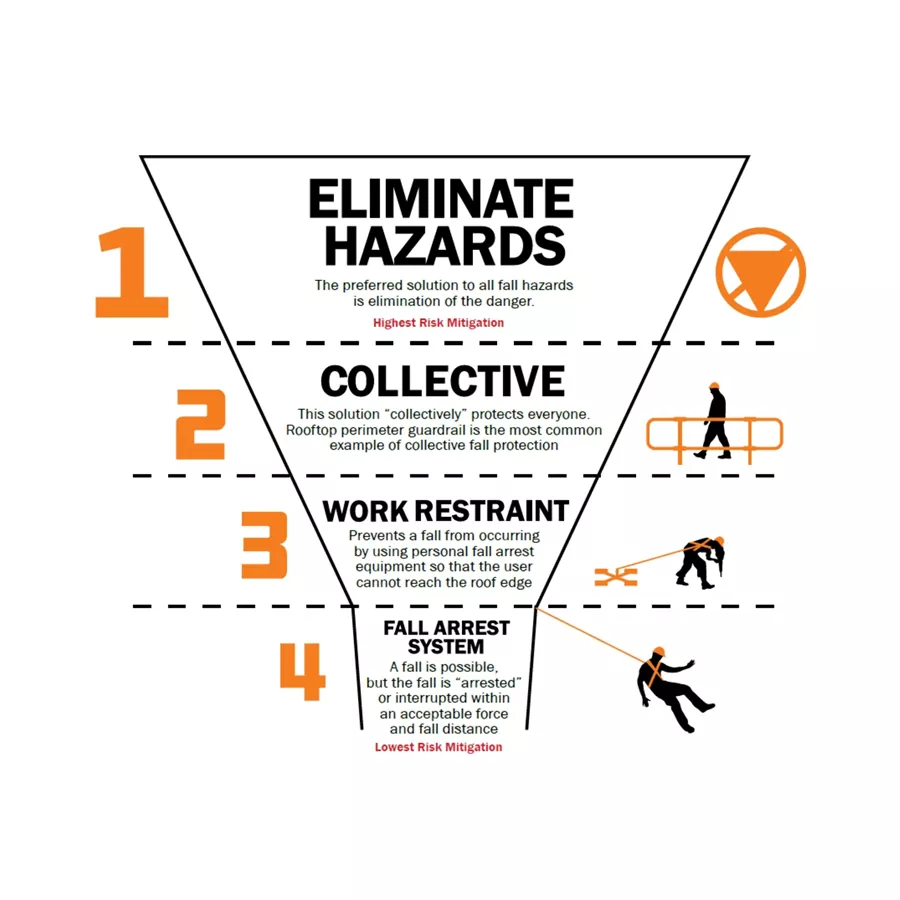
A truly comprehensive rooftop solution follows the Hierarchy of Fall Protection. An expert starts by inspecting the roof site for potential fall hazards. From there, a complete system solution and recommendations are created that descend down the four levels of the hierarchy, from simple, sensible approaches for eliminating risks all the way down to lifesaving personal protection systems.
Collective Systems require no additional training to use. Fall Restraint and Fall Arrest Systems both require a high level of user competency, training and additional inspection to be used properly.